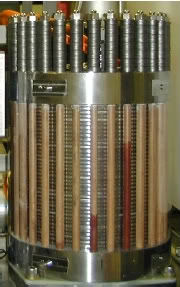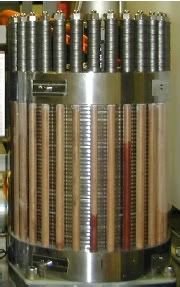Electric Vehicles – Batteries and Fuel Cells

Honda’s Steve Ellis is one of the world’s foremost authorities on the subject of alternative fuel vehicles and their commercial trajectory. He happened to be a fellow speaker at last month’s AltCarExpo in Santa Monica, and I’m proud to count him among my friends. We’ve have had several meetings over the past year or so, from which I’ve learned how much more there is to the subject of fuel cells than most people realize. In an interview last night, Steve reviewed the subject with me from top to bottom, forming the basis of an important chapter in my book on renewables.
While they were fresh in my mind, I thought I’d note a few of the most interesting highlights from Steve’s presentation:
- Of those who know anything at all about fuel cells, most have opinions that are based on sources that have made essentially no effort to treat the subject fairly.
- It is true that the process by which hydrogen (the “fuel”) is electrolyzed from water and then, in the car, recombined with oxygen to form water is less efficient that the process of storing electrical energy in a battery and converting it to kinetic energy in an electric motor. However, this is largely missing the point; there are far more important factors that affect fuel cells’ utility in transportation that are normally overlooked.
- Both types of electric vehicles (fuel cell and battery) offer the potential for completely clean transportation; the issue is how the energy is generated in the first place.
- Over the past few years, the efficiency of fuel cells has improved faster than the relevant statistics (energy density and cost) of batteries.
- Technologies by which drivers can refuel their cars for longer trips will bedevil the battery electric vehicle market for the foreseeable future. Better Place is not a good fit for the US, and ubiquitous quick-charging is many decades away, if it ever comes at all. So if you want clean vehicles that can be refueled in a matter of a few minutes (versus many hours), hydrogen is your only answer.
I guess the most memorable moment of the interview was the concept of personal emotion and politics. Steve is at a loss to understand why people with a sincere devotion to environmental stewardship would manipulate the facts to denegrate a technology that is strategic to moving us in the right direction. “This is truly strange behavior. Fuel cell advocates don’t try to derail the battery industry. It’s obvious that both have strengths and weaknesses, and form complementary paths in our journey to clean transportation.”
I guess we’d all like to think that meeting the challenges of reducing our carbon footprint are purely technological, rather than political. Or — if the challenges in fact do have political components that it’s “the good guys against the bad guys” — and that there is a kind of “brotherly love” among the fans of renewable energy and electric transportation. But my recent interviews have suggested that this is not the case. All I can say is what I remind my kids of constantly: This is not going to be easy. Let’s not fight among ourselves and make it impossible.


lovely. =)
I have a few hydrogen links http://delicious.com/mikehedge/hydrogen some might be interesting
The reason that fuel cells are not viable is because unlike batteries fuel cells are not an energy source. Batteries store energy in the form of electricity internally from an external charge. Fuel cells do not store energy, they convert fuel into electricity. Fuel cells solve NONE of the current problems and introduce additional issues;
1. Fuel for the fuel cells needs to be created usually from fossil fuels, or water + electricity = hydrogen. The electricity needs to come from some source.
2. Fuel for the fuel cells needs to be transported usually by tanker or truck – this uses fossil fuel. It is inefficient when compared to the existing electric grid.
3. Hydrogen fuel distribution systems need to remain under pressure, and never leak. They will need to pump the fuel into large underground insulated tanks and above ground insulated storage containers. Those cost big bucks. And then hydrogen is pumped again (never leaking) into personal automobiles and trucks, this pumping needs to be under high pressure, to store enough fuel on board to allow reasonable travel distance.
4. This on-board storage, needs to be under pressure, and cold, very cold. This is not available / affordable technology. The only way to achieve high enough pressure is to super cool the fuel and the tank – this again uses energy.
5. At every step in the manufacture and distribution and storage and consumption of fuel for fuel cell transportation, there are energy losses, brought about by the conversion or transportation of this fuel.
When you look at the electric grid as a potential fuel source, powered in part by renewable energy – and the inherent efficiencies of battery electric vehicles, it is a completely different game.
When it comes down to it, once you convert hydrogen to electricity to power your car it costs you 10 to 100 times as much to travel in that car as it would in a simple battery powered electric car.
So
Lets focus funding efforts on making good batteries that are really light-weight.
The myths of hydrogen as a fuel source in detail
Hydrogen or EVs (from EV World)
Both government and industry need to come to terms with reality of hydrogen, according to David Strahan, the author of The Last Oil Shock: A Survival Guide to the Imminent Extinction of Petroleum Man. Writing in today’s edition of ODAC Newsletter, he points out the short-term focus of current hydrogen infrastructure initiatives like the one in the UK that saw the opening of the first public hydrogen refueling station at Birmingham University, to be followed by three more in London. He notes they will be supplied by hydrogen derived from natural gas, which still emits CO2 and is a finite resource. He then tackles the issue of creating it from electrolyzed water and makes some sobering comparisons.
* To produce the gas cleanly and in bulk you must electrolyze water, which requires huge amounts of power. (To give an idea of scale, two chlorine plants operated in Cheshire by Ineos Chlor, which produce the chemical by electrolyzing salt water, consume more electricity than the entire city of Liverpool).
* Then, to reduce the hydrogen gas to a manageable volume, it must either be chilled to -160C to become liquid, or must be compressed, both of which processes require more energy.
* Because of all this, to run Britain’s road transport on cleanly generated hydrogen would require a massive expansion of electricity generating capacity: 42 Sizewell B nuclear power stations (we currently have the equivalent of 10); solar panels covering every inch of Lincolnshire; or a wind farm covering the entire northwest region of England. You would be much better off developing electric vehicles, where the energy losses between wind turbine and tarmac are massively smaller. It is mystifying therefore that so many apparently intelligent people remain transfixed by the hydrogen mirage.
* It is often stated that hydrogen explosions cannot occur in the open air. On 3 March 1983 there was a hydrogen explosion in an open street, called Brahegatan, in Stockholm, Sweden. The event occurred when gas cylinders where unloaded from a lorry and hydrogen suddenly started to leak out. The hydrogen was in 18 cylinders containing about 10 kg of hydrogen. The blast wave from the explosion broke windows in a range of about 90 meters, causing 16 persons to be injured. Note that the quantity of hydrogen here is about 1/3 the quantity that would be needed to give a car an autonomy of 500 km.
In short the use of Hydrogen is a net energy loss (at every stage), from production and storage, to transportation, distribution and eventual use in electric vehicles. It is much more efficient to generate electricity with Wind or PV power, and store it in batteries, (which are an existing and rapidly improving technology), for use in electric vehicles.
Breaking a hydrogen molecule into electrons and protons, and then sending it through an electric drive motor, and recombining the particles with oxygen to produce water poses an enormous challenge. “While hydrogen is universally abundant, it’s not cheap to get at”, noted the Washington Times editorial. “At the moment, fuel cells are actually energy losers, since it costs more to free the hydrogen than is earned by running hydrogen through fuel cells.” In brief, it costs more energy to turn hydrogen into energy than current technology would permit.
The process involved is called hydrolysis, popularly called “cracking water. To do this you need energy, usually from coal, natural gas or nuclear plants. Since (once extracted) hydrogen has a very low energy density. It would cost more to fuel your car with it than our current system. The energy density of hydrogen is about one-tenth that of natural gas. While hybrid engines, available only in “demonstration” vehicles, would reduce our dependency on imported oil, that does not, however, make it any less of a bad idea.